Burns AFS, OR
1964 AN/FPS-7B Fire - Story & Photos
Contributed by Heinz Rengel
Looking at the equipment listing of this radar site you will notice that the FPS-7B was replaced with a FPS�66A during the radar site`s operational life. Not for technical reasons, but due to an unusual event not often seen in radar installations: FIRE. How could this happen with all the precautions in place?
It was a weekend in July 1964, about 1:00 pm. Corning back from town, we pulled up to the gate and while waiting to be cleared through, looking down the Squadron road , we noticed heavy black smoke pouring out of the search tower windows, We alerted the AP to sound the fire alarm and notify the officer (CQ) of the day. We drove straight to the Ops Building and hustled up the tunnel stairs that led to the Search tower. We were met by the on duty A1C asking us to round up more CO2 extinguishers, which we brought up to the search tower. Upon entering the tower we were overcome by black, dense, acrid smoke from the ceiling down to about a foot off the floor. There was no way to get to the source of the fire. Visibility was zero and the floor was slick with oil. Some of the rubber floor mats, soaked in oil were catching fire. The fire was spreading rapidly. It was time to bail out. On hands and knees we crawled out of the tower. The A1C said he was able to shut down some equipment but one channel was still running as well as the antenna was still rotating. The main power entered the building through three large scissor switches which required insulated poles with hooks to open. The whole set up was enclosed with a heavy chain link fence. No way to get to those switches. Meanwhile inside, the fire spread all through the first floor and up to the second floor, the transmitter-receivers section. The smoke was still increasing and we were helpless.
The Burns fire department along with the base Civilian Engineers arrived about thirty minutes into the ordeal and were able to shut down all power to the tower. The Civilian Engineers man the emergency generators for the site and manage all the power for the radar site. They were able to open the chain link enclosure and shut of the power so the fire department could go into action. The fire department was then able to flood the tower with foam and water to extinguish the fire and cool all the steel structure. It took most of the afternoon to bring the fire under control and to ascertain that it was completely extinguished.
There were sagging "I" beams that had given way to the weight of the equipment. One could see the cable troughs with bundles of bare copper cables where the insulation was burned off. On the second floor the heat was so intense that the rubber floor mats caught tire and set all other flammables on fire damaging all cabling and equipment. Overall, major damage beyond any chance of repair, a complete loss.
A fire watch was set up and somebody patrolled the ghostly, smelly tower every half hour. I say ghostly because at night, whenever the north height finder beam was sweeping down, all the neon indicators in the receiver section started to light up then go dim. With the wind blowing through the tower and no lighting, yes, the FPS�7 Ghost .........
The investigation showed the cause of the fire was a malfunctioning Main Contactor Relay in the power supply rectifier cabinet mounted on the upper left wall. Due to possible chatter, it ripped itself off the wall mounting, swinging on its cables like a pendulum, shattering the rectifier tubes and breaking the porcelain feed throughs from the high voltage transformer, allowing insulating oil to pour all over the red glowing plates of the still powered rectifier tubes. The heat generated was so intense that it melted the cabinet doors. The capacitor bank in the bottom of the cabinet burst and further fed the tire. With the many gallons of insulating oil flowing out of the transformer and spreading all over the floor it�s no wonder that we were not able to fight the fire. Not to mention the very toxic fumes horn the burning PVC / Rubber insulation and PCB insulating oil.
About a week later the overhaul team from Hill AFB came to help to remove all FPS-7 components, the antenna and the radar dome, which was up until then, maintained with emergency wiring to the blowers. The tower was refurbished with new "I" beams, deck plates, cable troughs and painted. Next, the team installed the new radar equipment, antenna and new radome. The whole process took about 2 months before the search radar was back in full operation.
The FPS�66A was easier to maintain than the 7B, especially in the receiver alignment duties. She operated quite well and was pretty reliable overall. So some good came out of the accident and the 66A stayed in operation until the base was decommisioned.
This was an unfortunate, unusual accident, strange circumstances, but none the less it happened that summer at the 634th, and was the reason for the FPS-66A installation.
.
The pictures show the destruction of the fire:
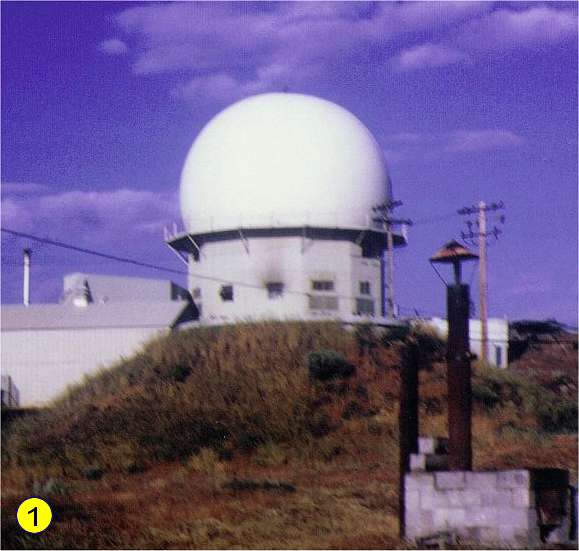
1. Search radar tower with soot-blackened windows.
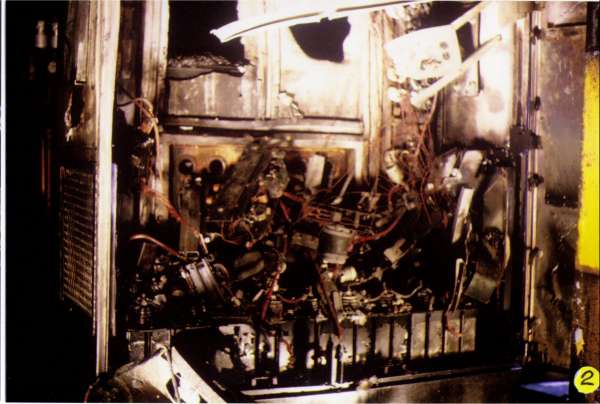
2. The high voltage rectifier cabinet showing the burnt remains of the main contactor relay, blower motors on top of the filter bank. One can clearly see the holes in the high voltage transformer where the porcelain feed-throughs were located.
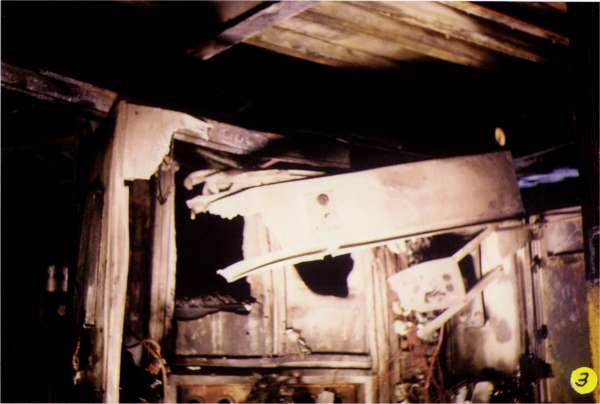
3. The top of the high voltage cabinet.
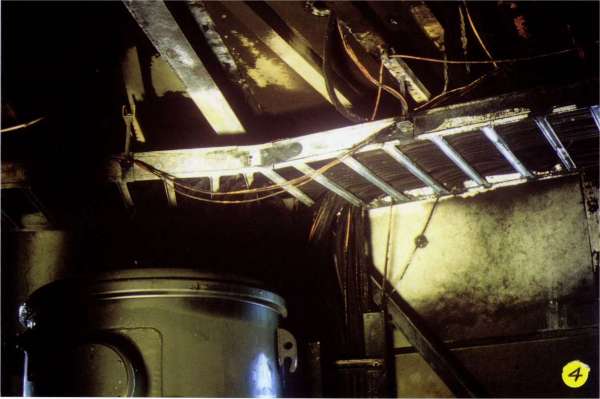
4. Ceiling and cable trough damage
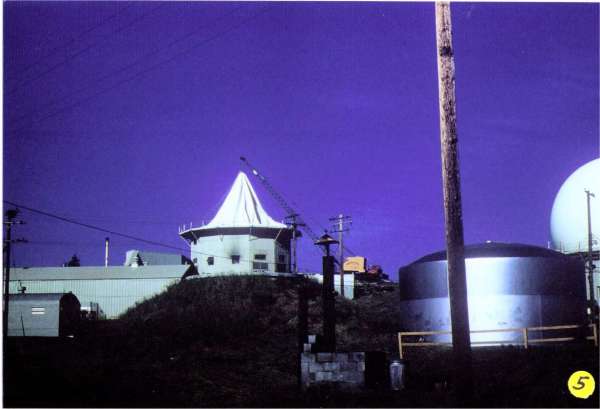
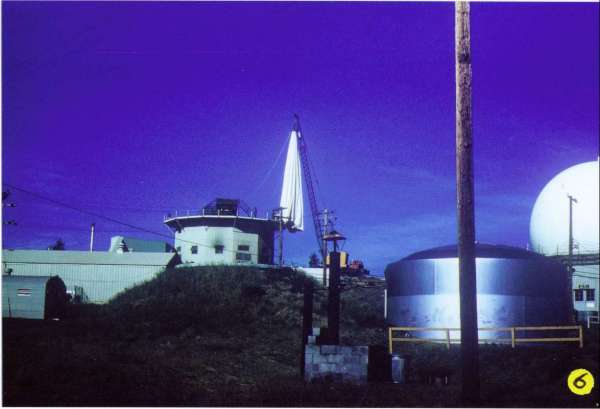
5. And 6. Crane removes the old bubble.
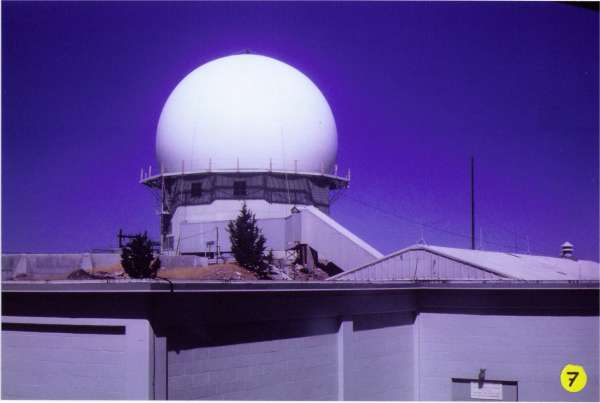
7. The newly refurbished, now FPS�66A search tower.
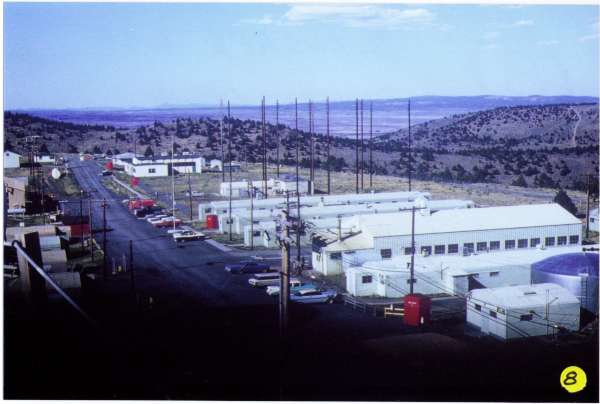
8. An overview of the 634th radar Sqdn. Looking north from the Search tower.







